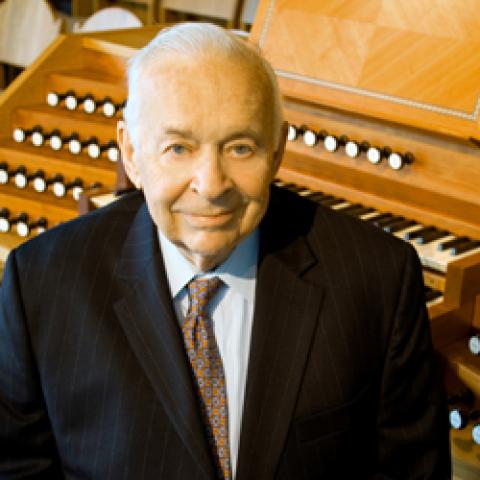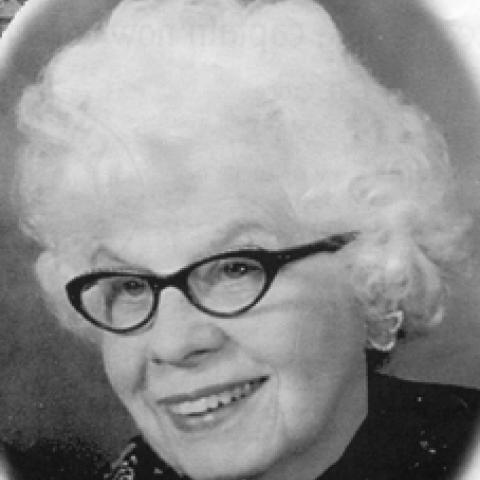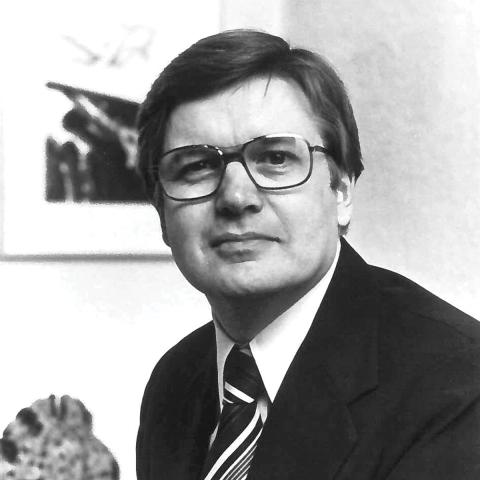
Nunc Dimittis
Robert Cameron Clark, 85, died August 23 in Houston, Texas. Born September 13, 1931, in Fairbury, Nebraska, he began piano lessons in the fourth grade with Margaret Dietrich and attended Kansas City public schools whose music department was led by noted music educator, Maybell Glenn. At age 14, he held his first church job where he played an Estey reed organ.
In 1952, he graduated from Central Methodist College (Fayette, Missouri), where he studied organ with Orpha Ochse and Luther Spade and piano with Opal Hayes and Nannie Lou Wright. In 1954, he completed his graduate studies in New York City at Union Theological Seminary’s School of Sacred Music, where in addition to organ study with Clarence Dickinson (1952) and Ernest White (1953), he studied Baroque performance practice and harpsichord with Gustav Leonhardt. His dissertation on Olivier Messiaen included a translation of the composer’s Technique de mon langage musical.
After holding positions at Baker University (Baldwin City, Kansas), Christ United Presbyterian Church (Canton, Ohio), and Cornell College (Mount Vernon, Iowa), he taught at the University of Michigan (Ann Arbor) for 17 years (1964–1981). A Rackham School of Graduate Studies research grant (1976) enabled him to study organs in Germany, Switzerland, and France. Focusing on organs in Saxony and Thuringia, Clark played nearly all the organs built by Gottfried Silbermann, research that contributed to the initial impetus for building a Silbermann-inspired C. B. Fisk organ (Op. 87) at the University of Michigan. During his research in then East Germany, his study of manuscripts in the East Berlin Stadtsbibliothek led to his co-authorship of a new edition of Johann Sebastian Bach’s Orgelbüchlein (1984).
Beginning in 1981, Clark taught at Arizona State University where he played a decisive role in the design of ASU’s organ hall and the construction of the Paul Fritts organ. Both were focal points for a symposium, The Historical Organ in America (1992), attended by musicians and organ builders from around the world. Clark retired from ASU in 1998 as professor emeritus of music.
Throughout his career, Clark served as adjudicator for regional, national, and international competitions including those of St. Albans and Grand Prix de Chartres. His several CDs include Bach at Naumburg, the notable first recording of the fully restored Hildebrandt organ in the Wenzelskirche, Naumburg, Germany.
Robert Clark is survived by his children Susan Clark Joul, Barbara Clark, Robert Clark, and Jill Meiburg; grandchildren, Ivy Joul, Henry Meiburg, Sebastian Meiburg, and Maxwell Meiburg; and a sister, Carol Chamberlin.
Edna I. VanDuzee-Walter, 96, died peacefully at home in Round Lake, New York, August 8. She was born May 27, 1921, in Bradford, Pennsylvania, the daughter of Lorenzo and Oral C. Lawton. Early in life she played the piano and showed an unusual affinity for music. She graduated from Turin High School in Turin, New York, and later received two degrees in music education from the Crane School of Music in Potsdam, New York.
Edna married Robert F. VanDuzee in 1945, who predeceased her in 1988. She is survived by her second husband, Norman Walter, a daughter, Barbara Jean (Allan) Michelin of Wappinger’s Falls, New York, and a son, Robert F. (Stephanie) VanDuzee, Jr., of Brigantine, New Jersey, as well as several nieces and nephews.
In 1947, Edna moved to Round Lake where she became a member of the local Methodist church, and served the congregation as choir director for over two decades. She taught music in several public schools, gave private lessons, and ran a musical nursery school in Round Lake between 1969 and 1986. She was a member of the Round Lake Woman’s Improvement Society, serving several terms as president, and was also active in civic affairs.
Beginning in 1968 and for some forty years, she was curator of the Round Lake Auditorium and its famous Davis & Ferris organ. She organized concerts, did fund-raising, and raised awareness of the organ’s historical significance on a broad scale. She was also an enthusiastic member of the Organ Historical Society and the local chapter of the American Guild of Organists. She was the recipient of several honors, including the Distinguished Service Award of the Organ Historical Society.
Her funeral was held on August 16 at the Round Lake United Methodist Church, and she was buried in Memory Gardens Cemetery, Colonie, New York. Memorial contributions may be made in her memory to the Round Lake Auditorium, Post Office Box 85, Round Lake, New York 12151.





